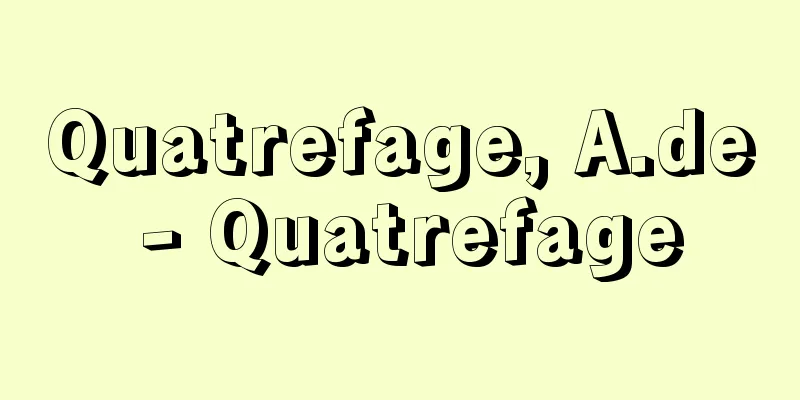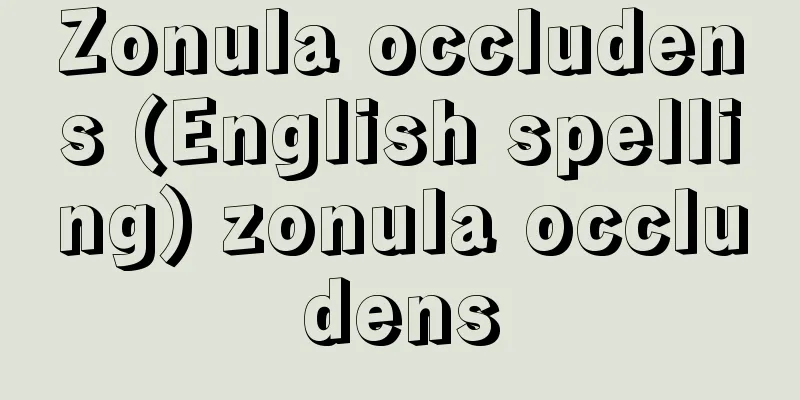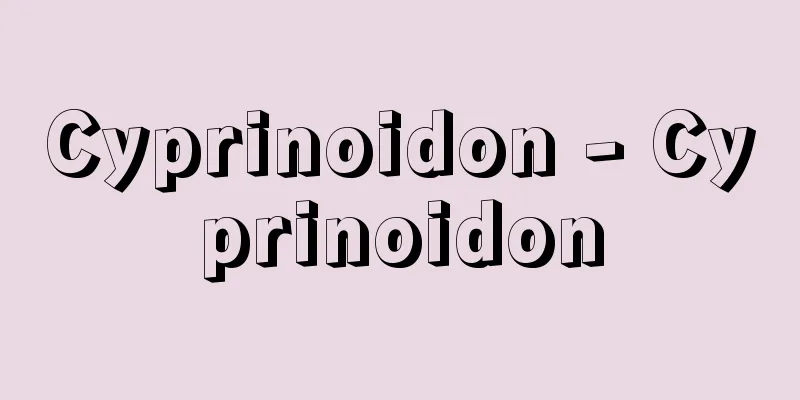Briquettes - Rentan (English spelling)

|
A type of carbonaceous solid fuel. It is a solid fuel made by solidifying powders of anthracite, coal, charcoal, coke, etc. and forming them into the appropriate shape and size. The powders of the raw materials are mixed in the appropriate ratio and crushed, and binders such as pitch, funori, and pulp waste liquid are added, kneaded well, and formed into a certain shape by machine. Lime may be added to fix the sulfur in the raw materials. For industrial briquettes, it is enough to dry them thoroughly, but for home use, they are first distilled at 500 to 600 degrees Celsius to remove volatile matters and odorous gases. Industrial briquettes are large, rectangular or oval, and were once used mainly in steam locomotives and ships. For home use, there are briquettes, stick briquettes, perforated briquettes (thick cylindrical with vertical holes), and tadon. There are also ignition briquettes and match briquettes, which have a layer of a substance that is easily ignited on the top of the briquettes, or are mixed with catalysts (alkali metal salts, alkaline earth metal salts) to make them easier to ignite. Small ones are used for heating, while larger ones are used for commercial and industrial purposes. Its characteristics are that it is available in a suitable shape and size, that the ash content and volatile matter can be adjusted, that it burns gently and keeps the fire burning, that it is easy to transport and handle, etc. The composition of the briquettes, which determines the quality, and the calorific value vary depending on the mixture of the raw materials. Around 1960, in Japan, technological developments were underway to alleviate the shortage of caking coal, a raw material for steelmaking, and briquettes were produced by molding inferior caking coal (slightly caking coal, non-caking coal) without adding binders. In addition, coke for steelmaking is produced by charging briquettes together with powdered coal into coke ovens. When charcoal is burned, it is easy for carbon monoxide to be generated, so care must be taken with ventilation when using it indoors. It is not recommended to use it in airtight houses. [Yuzo Sanada] [Reference items] | | | | | | | [Additional information] |Source: Shogakukan Encyclopedia Nipponica About Encyclopedia Nipponica Information | Legend |
|
炭素質固形燃料の一種。無煙炭、石炭、木炭、コークスなどの粉末を固めて適当な形と大きさに成形した固体燃料。原料の粉末を適当な割合に混ぜて粉砕し、ピッチ、フノリ、パルプ廃液などの結合剤を加えてよく練り合わせ、機械で一定の形に成形する。原料中の硫黄(いおう)分を固定するために石灰を加えることもある。工業用練炭は、これをよく乾燥しただけでよいが、家庭用は、一度500~600℃で乾留して、揮発分や悪臭ガスを除いている。工業用のものは長方形や卵形で大きく、かつてはおもに蒸気機関車や船に使われていた。家庭用としては、豆炭、棒炭、穴あき練炭(太い円筒状で縦に穴があいている)、たどんがある。練炭の上層部に火のつきやすい物質の層をつけたり、着火を容易にする触媒(アルカリ金属塩、アルカリ土類金属塩)を混ぜた着火練炭、マッチ練炭もある。小さなものは採暖用、大きなものは業務用、産業用に使われる。 特徴としては、適当な形と大きさがそろっていること、灰分や揮発分を加減することができること、燃え方が穏やかで火もちのよいこと、運搬や取扱いが便利なことなどである。品質を左右する練炭の組成、発熱量は原料の調合により異なる。 1960年(昭和35)ころより日本では、製鉄用の原料となる粘結炭の不足を解消するための技術開発が進められ、劣質の粘結炭(微粘結炭、非粘結炭)に粘結剤を加えないで成形した成形炭(ブリケット)が製造されるようになった。また、成形炭を粉炭とともに室炉(コークス炉)に装入して製鉄用コークスがつくられている。 練炭が燃焼する際、一酸化炭素が発生しやすいので、屋内での使用は換気に気をつける必要がある。気密性の高い住宅での使用は好ましくない。 [真田雄三] [参照項目] | | | | | | | [補完資料] |出典 小学館 日本大百科全書(ニッポニカ)日本大百科全書(ニッポニカ)について 情報 | 凡例 |
Recommend
Gypsophila paniculata (English name) Gypsophilapaniculata
… [Eiichi Asayama]. … *Some of the terminology th...
Unemployment rate
The figure is the number of unemployed divided by ...
Chonetes
…Most brachiopods are sessile, epiphytic creature...
Cissus (English spelling) Cissus; grape ivy; treebine ivy
A general term for the genus Cissus (Vitaceae), wi...
Imprisonment - Kinko
A type of imprisonment. It is stipulated in the P...
Boron (boron)
Periodic table Element symbol = B Atomic number = ...
Yellow baboon
It is an animal of the Cercopithecidae family of ...
Felis concolor coryi (English spelling)
…[Tadaaki Imaizumi]. … *Some of the terminology t...
Roof truss - Koyagumi
This refers to the framework that makes up the ro...
Electronic scale (electronic balance) - Denshibakari (English spelling) electronic scale
A general term for scales that incorporate electro...
Lake Kasumigaura [town] - Kasumigaura
A former town in Niiharu District, in the central-...
Non-glutinous rice - Non-glutinous rice
…Indian rice is characterized by its elongated gr...
Salvianus - Salvianus (English spelling)
A Christian writer from late antiquity in Gaul. B...
Rosicrucians (English spelling) Rosenkreuzer German
A general term for several societies that develop...
Weishan Lake - Bisanko
A lake in the southern part of Shandong Province,...









